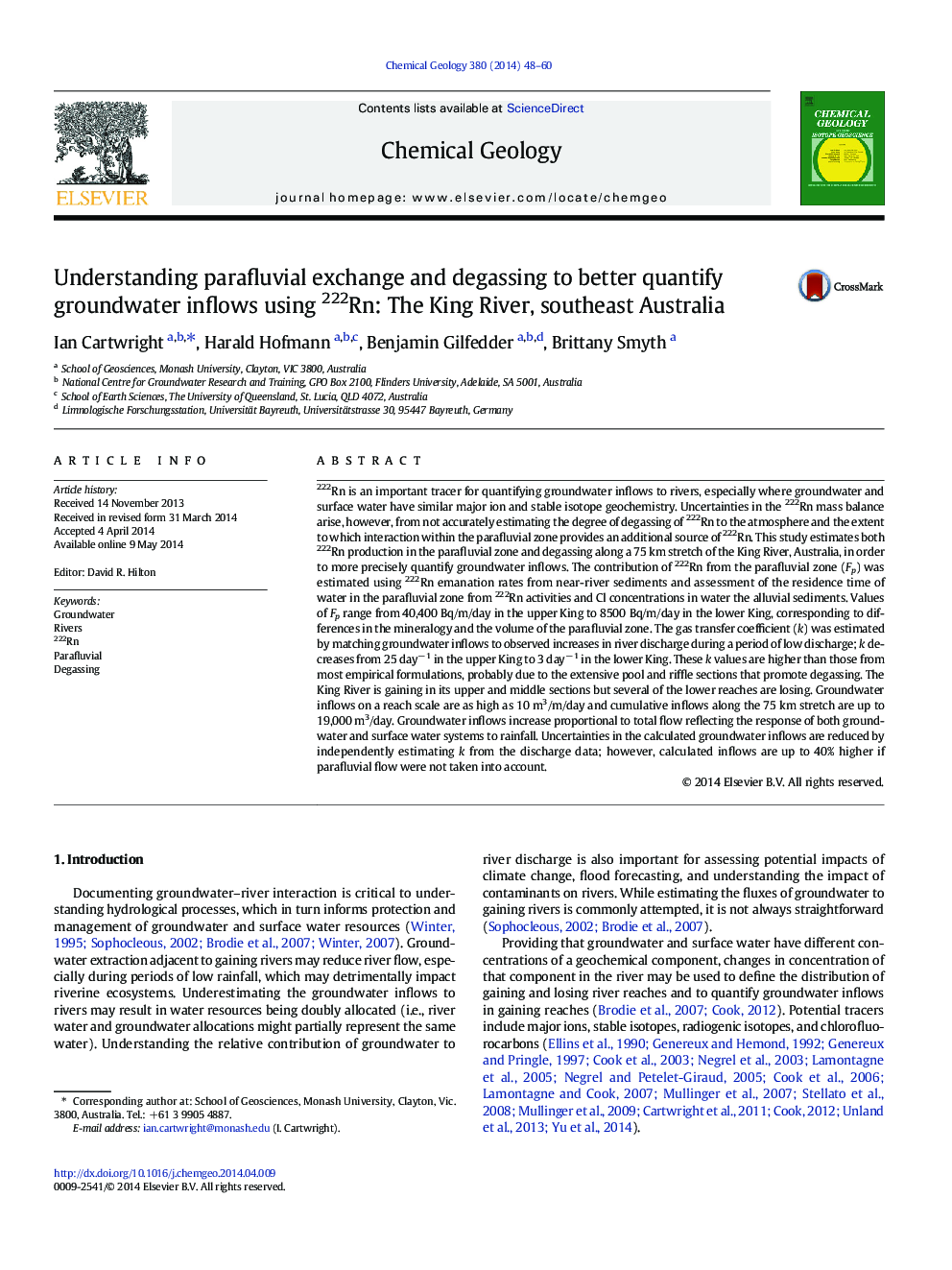| کد مقاله | کد نشریه | سال انتشار | مقاله انگلیسی | نسخه تمام متن |
|---|---|---|---|---|
| 4698729 | 1637592 | 2014 | 13 صفحه PDF | دانلود رایگان |
• Predicted Rn activities from emanation measurements agree with those measured in groundwater.
• Contribution of Rn from parafluvial zone is assessed.
• Rn degassing is independently assessed by comparison with flow gauge data.
• Rn degassing is higher than predicted from empirical formulations due to pool and riffle sections.
• King River transitions from gaining in upper sections to losing in lower sections.
222Rn is an important tracer for quantifying groundwater inflows to rivers, especially where groundwater and surface water have similar major ion and stable isotope geochemistry. Uncertainties in the 222Rn mass balance arise, however, from not accurately estimating the degree of degassing of 222Rn to the atmosphere and the extent to which interaction within the parafluvial zone provides an additional source of 222Rn. This study estimates both 222Rn production in the parafluvial zone and degassing along a 75 km stretch of the King River, Australia, in order to more precisely quantify groundwater inflows. The contribution of 222Rn from the parafluvial zone (Fp) was estimated using 222Rn emanation rates from near-river sediments and assessment of the residence time of water in the parafluvial zone from 222Rn activities and Cl concentrations in water the alluvial sediments. Values of Fp range from 40,400 Bq/m/day in the upper King to 8500 Bq/m/day in the lower King, corresponding to differences in the mineralogy and the volume of the parafluvial zone. The gas transfer coefficient (k) was estimated by matching groundwater inflows to observed increases in river discharge during a period of low discharge; k decreases from 25 day− 1 in the upper King to 3 day− 1 in the lower King. These k values are higher than those from most empirical formulations, probably due to the extensive pool and riffle sections that promote degassing. The King River is gaining in its upper and middle sections but several of the lower reaches are losing. Groundwater inflows on a reach scale are as high as 10 m3/m/day and cumulative inflows along the 75 km stretch are up to 19,000 m3/day. Groundwater inflows increase proportional to total flow reflecting the response of both groundwater and surface water systems to rainfall. Uncertainties in the calculated groundwater inflows are reduced by independently estimating k from the discharge data; however, calculated inflows are up to 40% higher if parafluvial flow were not taken into account.
Journal: Chemical Geology - Volume 380, 25 July 2014, Pages 48–60
